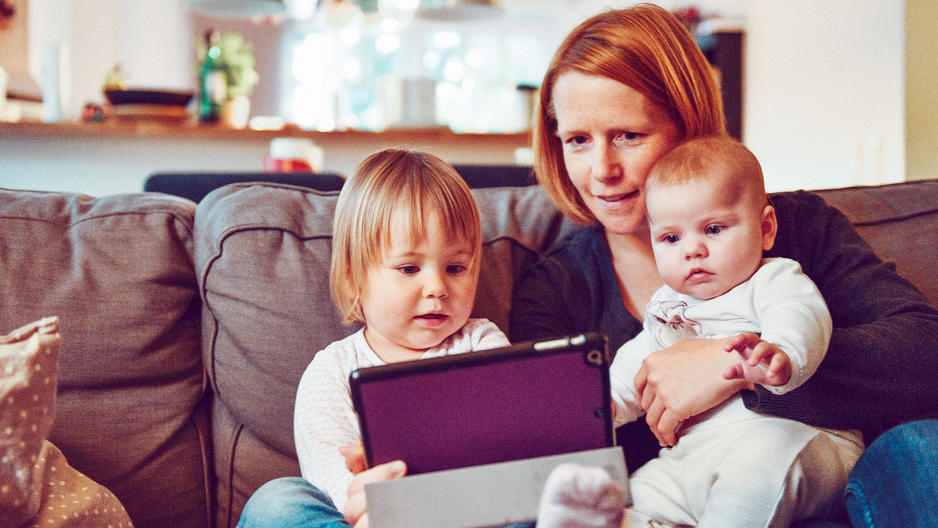How Paid Parental Leave Changed In 2016
This was supposed to be the year paid parental leave was going to expand. Experts predicted employers and lawmakers were going to finally start paying more attention to what many began to recognize as a hugely important benefit for working parents. After all, according to a 2016 report from the Bureau of Labor Statistics, more than 100 million employees still aren’t offered paid family leave at their jobs. A quarter of new mothers go back to work just 10 days after giving birth. Statistics like these, many argued, made a nationwide reckoning with the issue all but inevitable.
As the year draws to a close, some real progress has been made, but 2016 wasn’t exactly a watershed year for paid parental leave. The U.S. still comes in last out of 41 developed nations for its lack of a federal mandate for paid parental leave, according to the Organization for Economic Cooperation and Development. Although the benefit usually applies to new mothers, 31 of those 41 countries mandate paid leave for fathers, too.
This is puzzling in a country where the number of two-parent households in which both work full-time has increased from one-third in 1970 to 46% today, according to Pew Research. Here’s a look at what’s changed in the past 12 months—and what hasn’t.
States And Cities Step Up
Continuing on a trend from last year, the responsibility for compelling employers to offer paid parental leave has largely fallen to individual states, cities, and the private sector. Rhode Island, New Jersey, and California are currently the only three states that have provided private workers time off with partial pay. Fourteen other states previously passed measures that expanded the federal Family Medical Leave Act but come with sometimes sharp restrictions, such as covering only government workers.
Following the leads of Pittsburgh, Pennsylvania; Kansas City, Missouri; and Austin, Texas, legislators in other cities stepped in to fill some of the gaps earlier this year, stitching together paid sick leave for individual workers and paid family leave.
New York City Mayor Bill de Blasio passed a measure to give 20,000 non-unionized workers six weeks of fully paid parental leave; New York City’s total municipal workforce is about 300,000. Several months later, San Francisco approved six weeks of parental leave at full pay for either gender who either bear or adopt a child.
In November, Washington, D.C.’s Paid Family Leave Coalition revealed an updated bill that will provide for 11 weeks of parental leave, with progressive wage replacement rates reaching 90% for those earning 1.5 times the minimum wage or less. The bill passed on December 20.
Businesses Get Busy
Over the course of 2016, both privately owned and publicly held companies have further filled in the patchwork of city and statewide policies. Still, only 13% of private-sector employees have access to paid family leave, and that number drops to 6% for low-wage workers. The Society for Human Resources Management found that about 21% of big U.S. companies offered some fathers paid leave in 2015, up from 12% in 2014.
Among the companies implementing or expanding benefits this year (in no particular order):
Etsy. In April, employees became eligible for 26 weeks of fully paid leave over the first two years after a child’s birth, with at least eight of those weeks taken continuously during the first six months following the birth.
EY (formerly Ernst & Young). Also in April, EY announced a new policy to expand its parental benefits to over 35,000 U.S. employees. Both new mothers and fathers are eligible for up to 16 weeks of fully paid parental leave for birth, adoption, surrogacy, foster care, or legal guardianship.
Coca-Cola Company. Starting on January 1, 2017, the company’s 40,000 U.S. employees will be eligible for six weeks of paid leave regardless of gender, a policy that includes adoptive or foster parents. These benefits supplement the six to eight weeks of paid leave provided to birth mothers through short-term disability.
American Express. Twenty weeks of paid leave will be offered to men and women bringing a new child into their families through surrogacy, adoption, or birth, with an additional six to eight weeks for birth mothers.
Ikea. Also starting on January 1, 2017, the Swedish home furnishings giant is offering its U.S. staff of 13,000 up to four months of leave with pay and another eight weeks at half their base pay.
BASF. The chemical company announced on December 14 that the new year would bring expanded benefits. “All new parents—maternal, paternal, and adoptive—will be eligible for eight weeks of paid parental leave to bond with their children. For new moms, this is in addition to the typical six to eight weeks of paid maternity leave already available,” BASF said in a recent statement.
Looking Forward
Taken together, these policies impact a lot of workers. However, a recent study by Paid Leave for the United States (PL+US), a national nonprofit advocating for paid family leave, shows that there’s still a long way to go. The report found that two-thirds of the country’s 60 largest companies (ranked by the number of U.S. employees) have either no paid leave policy, or did not disclose their policy.
It remains to be seen what the Trump Administration will do in terms of mandating paid parental leave, but the child care plan the that President-elect announced during the campaign suggests that it will be minimal. As a candidate, Trump proposed only six weeks of paid leave for birth mothers whose employers don’t already offer coverage.
There is a business case to be made for offering paid leave. Companies both small and large interviewed by Fast Company cited a range of benefits, like attracting and retaining talented workers, increasing staff diversity, and avoiding the expense of hiring and training new employees—just to name a few—all of which can directly affect the bottom line.
If 2017 is the year crazy perks get left behind in favor of traditional benefits like paid time off, we may see the private sector taking the lead more than it has so far on behalf of new parents.
As Brian Kropp, the human resources practice leader for CEB, recently told Fast Company, “What’s likely to happen in 2017, as more and more companies go down that path of setting what that standard is, it will set a de facto social policy. That will have a bigger impact on social policy than what government can accomplish in a dysfunctional Washington.”
Fast Company , Read Full Story
(26)










